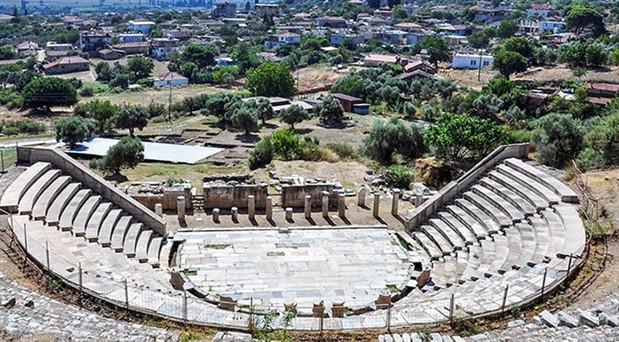
Following the last year’s discovery of four interconnected cisterns, out of which two have already been unearthed in the ancient city of Metropolis in İzmir’s Torbalı district, efforts will be made to unearth the rest two this year in a bid to bring them into cultural tourism.
Located between Yeniköy and Özbey neighborhoods, Metropolis is known as the “City of Mother Goddess.”
In the ancient city, where excavations have been ongoing since 1990, traces of many civilizations have been found from the first settlements in the Late Neolithic Age to the Classical Age and from the Hellenistic Age to the Roman, Byzantine, Principalities and Ottoman periods. In the ancient city, where many monumental structures have been unearthed so far, four interconnected cisterns were discovered during last year’s excavations.
Previously, two of these cisterns in this structure located under a seven-meter earth fill were unearthed, and now within the scope of excavations that started this year, the other two cisterns under the ground will be unearthed. This structure, which is thought to have been used to meet the water needs of the city in the Late Roman Period, will contribute to revealing important information, findings and historical artifacts about the period.
Serdar Aybek, professor at Manisa Celal Bayar University Archeology Department and the head of the Metropolis excavations, said: “Metropolis located in the Torbalı district has a long history that goes back to prehistoric times. Since prehistoric times, the region has had fertile lands thanks to the Little Meander River and has always been inhabited. This city has been inhabited since the Hellenistic period. It developed as a planned city. With the growth of the population in the Roman period, new buildings were built. The cistern structure was built to meet the water needs in the Roman period. It gives us important information about the period in terms of water engineering.”
Stating that two parts of the structure, which consists of four interconnected parts, were unearthed last year, Aybek said: “The cistern has a water capacity of approximately 600 tons. We aim to reveal the remaining two parts this year and bring this well-preserved and unique structure to cultural tourism.”
Providing information about the structure, Aybek said: “Each section is interconnected by a tunnel. It was built with the method of communicating vessels. When water flows, it fills all four rooms at the same level. Built during the Roman period, it is located on the highest level of the city, which we call the Acropolis. Therefore, they transfer the water collected in the Acropolis to its places on the lower slopes of the city more easily.”